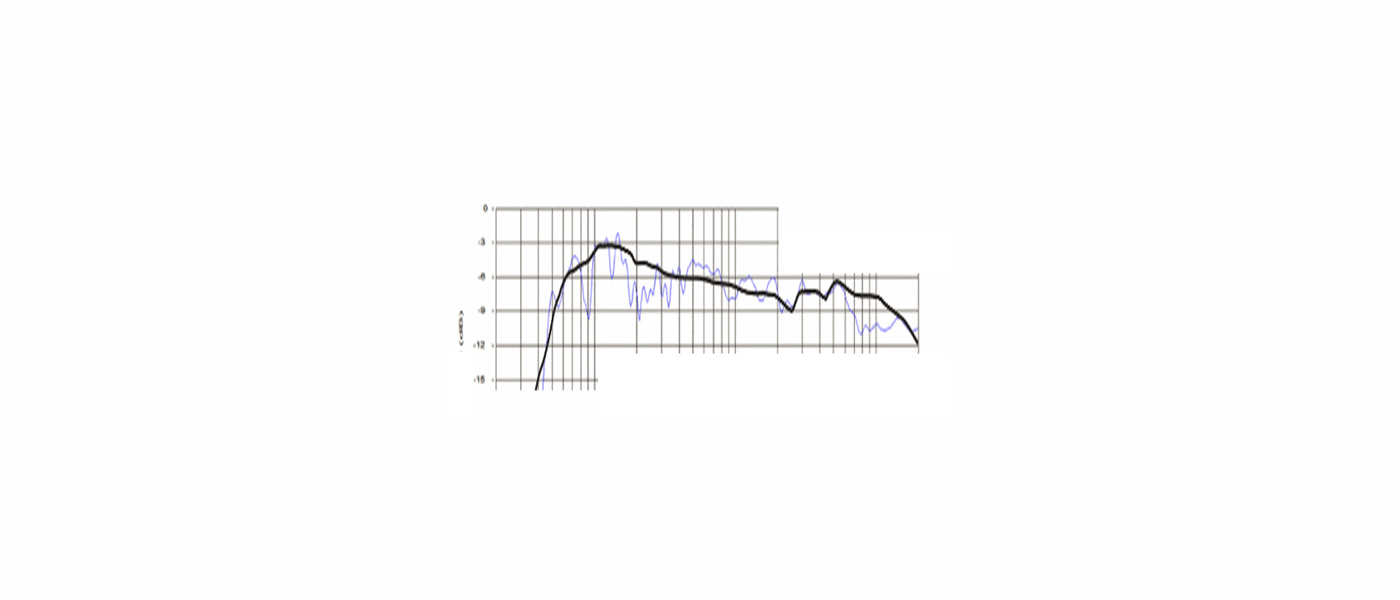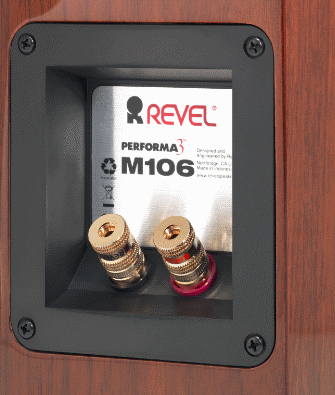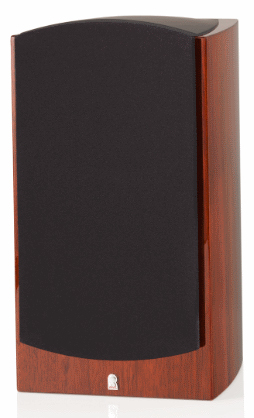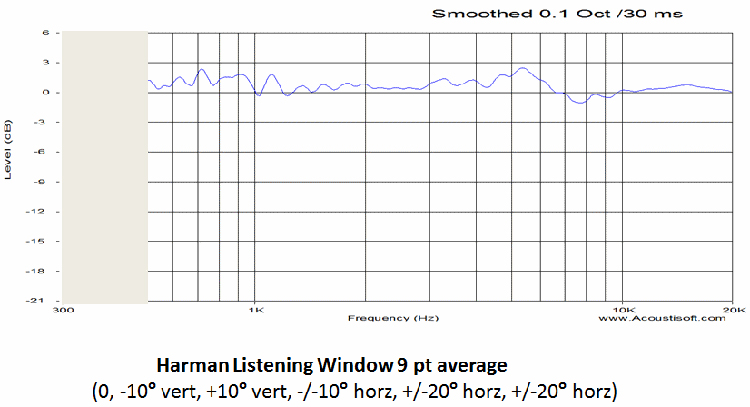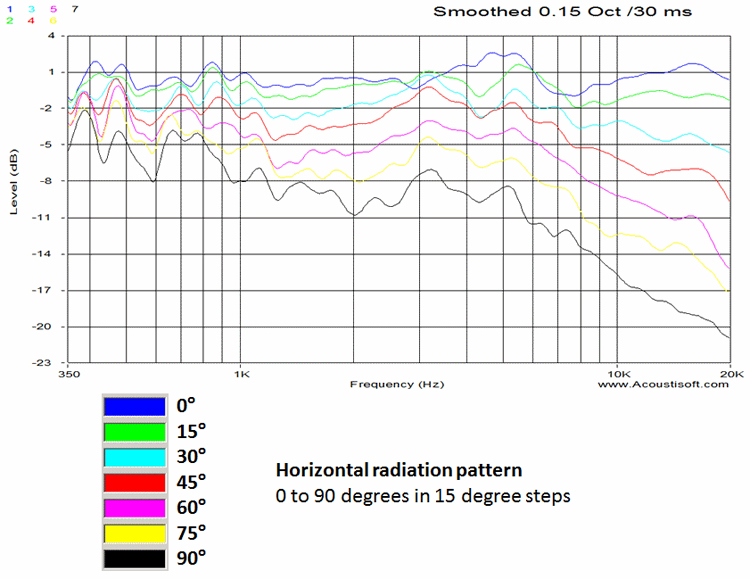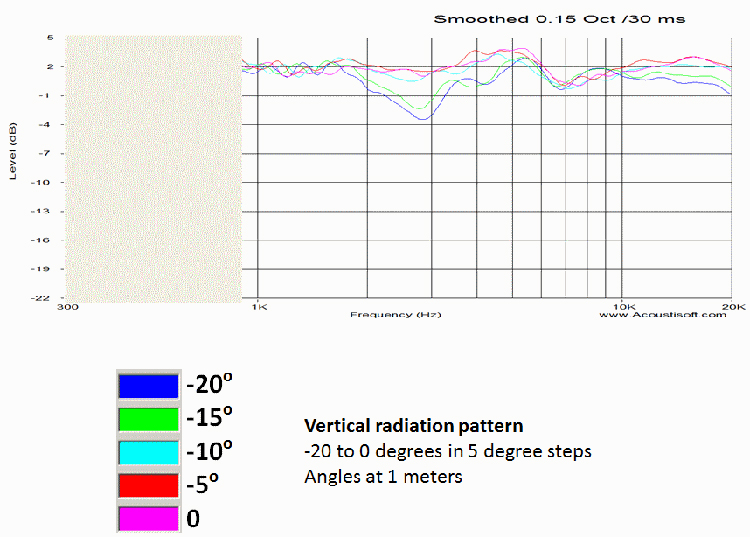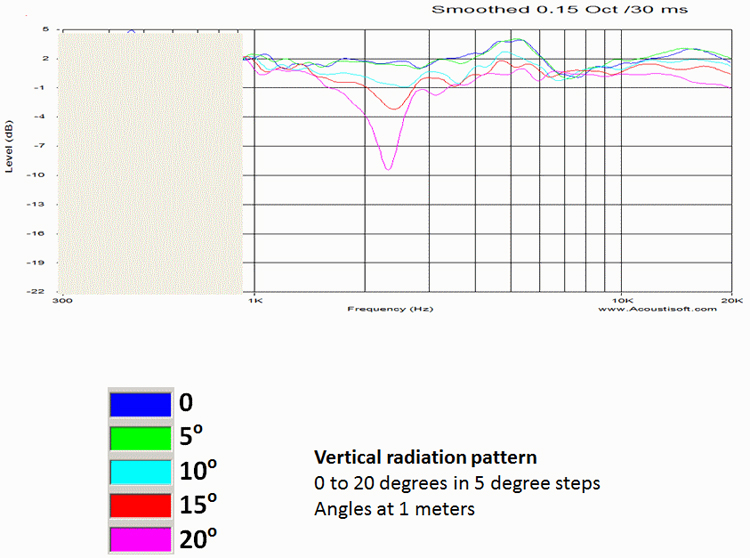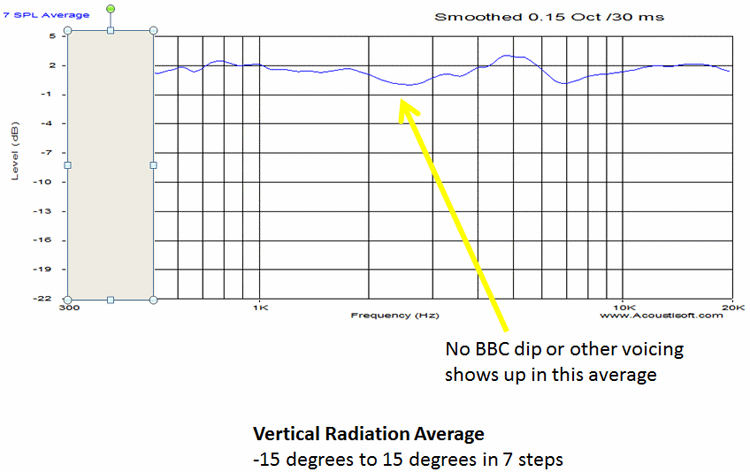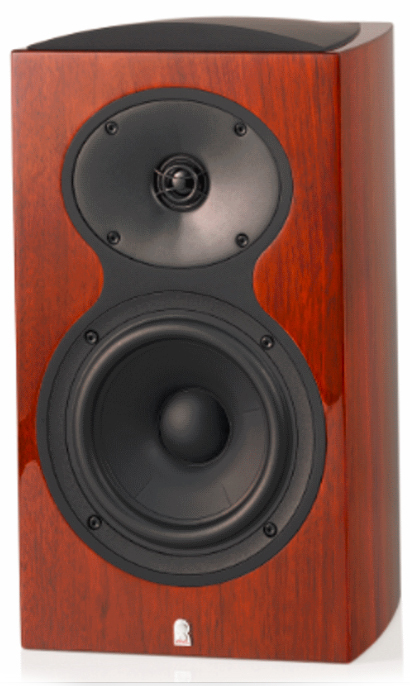
Revel PERFORMA3 M106 2-Way Bookshelf Monitor Loudspeaker
- Excellent anechoic performance to low end limit
- In room measurements almost independent of room size
- Subjectively smooth spectral balance
- Price / performance ratio results from 35 years of loudspeaker research
- Bass extension to 35Hz in small rooms
- Small room placement instructions provided below
Revel does not change models often. This is the 3rd generation of the Performa series. The Revel Performa3 M106 2-Way Bookshelf Monitor loudspeaker, released in late 2013, is the first Revel speaker I have been able to formally review. It has taken me quite some time to complete the review. One significant reason is my investigation of the controlled listening tests developed by Dr. Floyd Toole and Sean Olive. I was prompted to do this given this speaker undergoes these listening tests during the development process. Figuring it all out took a significant amount of time. They even have a listener training program which I investigated. I was not happy with everything they did and made my own extensions to the listening procedure. My adventure with the listening tests, my extensions, and some sample program material I used will appear in a separate article.
Finishes:
Piano Black or High Gloss Walnut
1” (2.5 cm):
Aluminum Tweeter with Acoustic Lens Waveguide
6.5” (16.5 cm):
Aluminum Cone, Cast-frame Woofer
Crossover Frequency:
2.3 kHz with 4th order LR (Linkwitz–Riley) acoustic crossover slopes
Enclosure Type:
Bass-reflex via Rear-firing Port. Optional foam port blocker
Net Weight:
19 lb.
Dimensions:
15” H x 8.3″ W x 11″ D
Optional Stand:
Adds 25”
Price:
$1000
Stands:
$500
Individually:
Boxed Allows Purchasing An Odd Number (Matched Center Channel)
Company:
SECRETS Tags:
Revel, Revel PERFORMA3, Bookshelf Monitor, Loudspeaker, Loudspeaker Reviews
Since this is my first formal review of a Revel speaker, let me provide the history of this product and its developers.
The first generation Revel mini monitor product was the M20 introduced in 1999 at $2000. The Revel M20 was one of the first Harman designs to take full advantage of the R&D work started at Harman in 1991 when they hired Dr. Floyd Toole.
Dr. Floyd Toole came from the NRC (National Research Council Canada) to become corporate vice president of acoustical engineering in 1991. Dr. Toole spent his entire career at the NRC doing seminal work research in a wide variety of subjects in acoustics including loudspeaker measurements and the relationship to controlled listening tests.
It took Dr. Toole a few years to build the team and the research facilities at Harman. Dr. Sean Olive came on in 1993 after working at the NRC from 1985 were he did research on subjective and objective testing of microphones, loudspeaker and rooms.
Starting in the early 80s, a long line of engineers at new and well-established consumer speaker manufacturers beat a path to the NRC’s door to take advantage of the research facilities. Canada became populated with loudspeaker companies taking advantage of the NRC facilities and hiring graduate students.
Kevin Voecks came to Harman in 1996 to start the Revel division. He is now Acoustic Technologies Manager for Harman Luxury Audio Group. Kevin’s link to the NRC was when he worked as an engineer for the Canadian speaker company Mirage. He continued to use NRC research when he was chief engineer at Snell.
Mark Glazer, Revel’s principle design engineer, predates Dr. Toole’s arrival. He has been with Harman since 1989 and has been with the Revel division since inception in 1996. While his contribution to the Revel designs has been large, his name is not as well known until recently when he started to present a couple of papers.
This is a big review. I will be walking you through many of the advances that this speaker inherits from more than 30 years of research citing conference presentations, journal papers, patents and international standards from the names highlighted above
Let me start with one Mark Glazer. One of his presentations is written at a level appropriate for many readers. The presentation was given at University of Rochester. The slides from the talk called “Engineering Students Guide for Loudspeaker Design” can be downloaded.
Many of the slides from the talk pull back the curtain on basic design methodology Mark Glazer uses at Revel. Detailed photos are shown of drivers in all 3 of the Revel lines showing what changes take place as one moves from Concerta2 to Performa3 to Ultima2.
The first generation Revel mini monitor was the M20 introduced in 1999 at $2000. Three years later the 2nd generation M22 ($2200) was introduced. It used new internally developed cone materials (alumina / aluminum composite) and the tweeter changed from aluminum to titanium. The M22 stayed in the line from 2005 – 2013.
In 2004, a waveguide was placed on the tweeter to better match the dispersion characteristics of the midrange at the crossover frequency to the tweeter. It missed the Revel M22 with the patent having been filed in 2003, the same year the M22 came out.
The waveguide’s first appearance at Revel was on the Performa F52 floor standing speaker in 2005. While the waveguide was used throughout the rest of the Revel line, it did not make it onto a bookshelf speaker until the 2013 lineup when the M106 was introduced. A wide variety of waveguide shapes have appeared since the first commercial implementations in 2004. The M106 uses the third version of the waveguide and is common to the rest of the Performa 3 lineup. I have a complete section of this review which discusses the use and evolution of the waveguides.
Although an 8-year gap exists between the M22 and M106, the price has reduced by $200. The M106 is slightly smaller and weighs 7 pounds less. The efficiency has increased by 2dB using data from Revel. The Revel specified low-end extension ( -6dB) has moved from 41Hz to 54Hz.
The cone material has again changed moving to aluminum with ribs for the woofer and a return to aluminum for the tweeter. Production has moved from the USA to Indonesia.
The M20 and M22 included a 5-position tweeter level control which is gone from the M106. A boundary compensation switch, to use when the speaker was placed flush to a wall, is also gone but few will place the M106 that way.
The controls can still be found on the top of the line Revel F208. It is interesting that the F208 has been reduced in price by $2000 over the last generation Performa F52, with no change in internal box volume or low-end extension. The M20 and M22 had terminals to allow bi-wiring. This has been removed in the M106. The whole concept of bi-wiring makes no sense when simple engineering principles are applied. It is however a great profit center for the dealer.
Bi-wiring does provide one thing which is useful. You can put an L pad or just a small resistor (5 Watt or larger) in series with the tweeter side of a bi-wire terminal to lower its level. This would be a sub-optimal replication of the tweeter level control removed from the M106.
I am putting this statement up front since I do not want you to stop reading because you think that you cannot afford a complete system with the M106.
Putting your money into a speaker yields far more sonic improvement then deploying your money anywhere else except for the addition of an excellent electronic room correction system. I follow my own advice. This review was done with a long discontinued $300 CD player and $500 Yamaha integrated amplifier or equivalent electronics. The cable was the one that came with the CD player which connects to the amplifier’s line inputs. This is the same setup I use to drive my $6000 NHT Xd reference system.
The Yamaha integrated amp has more than enough voltage swing and current sourcing capability to drive the M106 to its limits. This is in part the result of the relatively benign impedance curve and reasonable efficiency. You will get no return for your money, based on double blind studies that have passed peer review to a recognized journal, provided the amplifier can drive the load presented by the M106. By contrast, Harman speaker technology is documented in many patents, conference presentations, and journal papers.
Secrets Sponsor
Another way to save lots of money is to forgo fancy cable and connect the M106 to your amp using 12 – 16 gauge zip cord, depending on run length, which will cost a maximum of $20.00. Harman Labs has shown that small frequency response deviations, at the speaker terminal, as a result of cable resistance, can be audible. A chart in the user’s manual indicates the gauge Revel recommends for a given run length.
The chart Revel provides gives recommendations to 90ft runs with 6 gauge wire. I cannot imagine anyone running that length. Inductance can become an issue with a 90ft run of 6 gauge wire. Six gauge wire is what is used in good quality jumper cables.
Revel recommends 12 gauge for runs less than 22 feet. Inductance is not an issue for that length and gauge combination. If you worry about cable the best thing to do is to arrange the room so the power amp is near the speakers to bring the run length to a minimum.
The M106 will not accept double banana plugs but you can find a nice set of single banana plugs at Amazon, again at about $20.00 for a bunch of 10.
Revel offers matching custom stands for the speakers at $500. The stands can be attached directly to the speakers. Assembly of the stands and the attachment of the stand to the speaker is best performed as a two-man operation. Harman says each stand is 4 pounds but they are actually 10 pounds. The fully integrated stands reduce vibration, especially if you use the spikes on carpet.
I would argue not to walk away from the M106 speaker if you cannot afford the stands. They look nice matching the speaker, and may provide some small sonic improvement, but you can get acceptable stands for $100. If you are on a limited budget, go for the M106 and the less expensive stands.
If you have more money in your budget, a good room correction system is the next thing to add. I find once you have good room correction in a system below 300Hz, it becomes impossible to listen to the system with the room EQ turned off. I will discuss the performance of two room correction systems I used with the M106 below.
Another place where money can be usefully deployed, if you purchase the Revel M106, is the addition of a subwoofer, especially in a large room, but only after you have a room correction system with excellent bass management. I will discuss optimal setups with the M106 below.
If you still have money left in your budget then consider the multiple subwoofer option. You do not have to do this all at once but can add additional equipment later. If you purchase a full size speaker you need all the investment up front.
As I said, this is a BIG review of the Revel Performa M106 Speakers. I have segmented the review into three parts. Read on for Part I. Parts 2 and 3 will be published over the next few weeks.
Part 1: Quasi- Anechoic Measurements
Part 2:Performance in a Large Room and its Relationship to Standardized Measurement Techniques
Part 3: Optimizing the Placement of a Mini-Monitor in a Small Room, listening tests and Conclusions
As I have said in the past, I measure before I listen. This approach checks for any damage to the speakers by the shipper, identifies any design defects that will dominate the subjective evaluation and, finally, allows me to find the best speaker placement in the room.
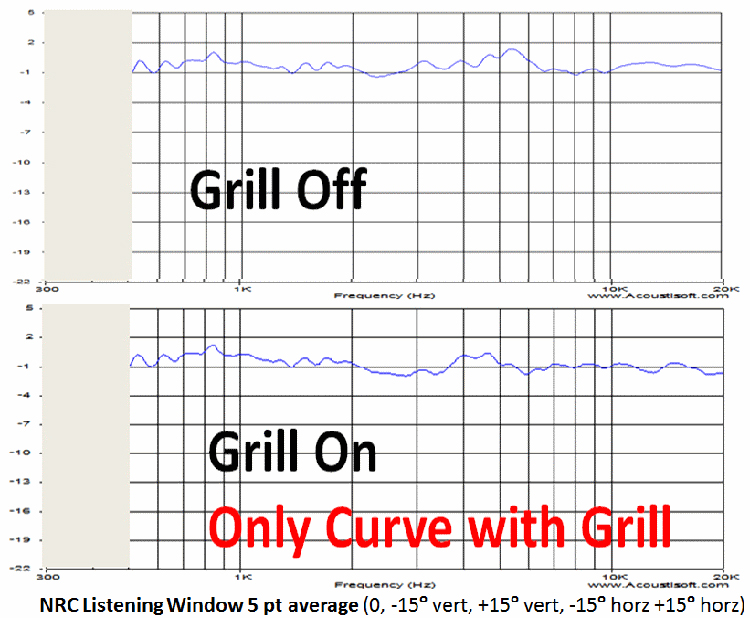
5 pt. NRC listening window (National Research Council Canada)
The figure above is the 5 pt. NRC listening window (National Research Council Canada). The small spatial averaging in the NRC window reduces small local interference effects in each of the five measurements. The angles used in the horizontal axis reflect differences a listener would experience as he moved from the center of the couch to the side. On the vertical axis, the different mic position takes into account listener height (standing or sitting on a low chair).
I made the listening window measurements with grill on the speakers as well as off. The differences are surprisingly small. Do not confuse this with the more common presentation of the difference between the grill on and off with a single point direct axis measurement. The NRC listening window is much more reflective of what one will hear in the room coupled with the radiation patterns of the speaker.
Grill on or off, the speaker is +/1.5dB from 500Hz to 20kHz. Below 500Hz, I started to see some room reflections from the quasi-anechoic test system I use, even with the speaker 4 feet off the ground so I blocked that data out. Quasi-anechoic tests try to simulate anechoic measurements but take place in regular room. To do the simulation, the speaker is sent a special signal that can be converted into an impulse response. The response is then windowed so the first room reflection is not included in the calculation. As the window is shortened, the resolution at lower frequencies is limited. The window time is at the top of my graphs, typically 30msec, which limits the graph to about 300Hz for 1/10th octave smoothing.
For in-room measurements at the listening seat, the window is increased to get resolution to 20Hz but many room reflection become part of the measurement. We want these reflection as part of the measurement because, at the listening, seat you hear the direct and reflected sound.
The peak in the 4.5 – 6.5kHz area is the dominate deviation noted in these plots. No resonance is observed from the tweeter to 10kHz. It is common to see these in less well designed high frequency drivers.
Around the 2kHz crossover you will note almost no energy loss. This is indicative of a well-designed crossover which I will confirm when I present the vertical radiation patterns below.
Harman has a different definition of a listening window than the one used for the measurement above. This listening window is defined in the reference below:
Devantier Allan, “Characterizing the amplitude response of loudspeaker systems”, presented at the AES 113th convention, October 2002, Convention Paper 5638
Secrets Sponsor
Now you are going to point out it that I am using a Harman test procedure to evaluate a Harman product, but this paper’s test procedures have been incorporated in the Consumer Electronics Association Standard called “A Method of Measurement for in–Home Loudspeakers ANSI/CEA-2034”. I will have more to say on Allan Devantier’s paper and ANSI/CEA-2034 later in the review.
The Harman listening window places more emphasis on the horizontal radiation pattern by increasing the number of measurements to six and the two vertical measurements are reduced from +/-15 degrees to +/-10 degrees. Compared to the NRC window, this one is actually less flat with a little dip in the response past the 5kHz peak. The origin of the peak and dip will be explained when I discuss the horizontal radiation patterns of the M106 below.
In a seminal paper published by Dr. Toole 30 years ago, he showed that blinded listener preference for a given speaker was dependent on the profile of the early reflection response in addition to the listening window and power response:
F.E. Toole, “Loudspeaker Measurements and Their Relationship to Listener Preferences”, Journal of the Audio Engineering Society, vol. 34, pt. 2 pp. 323-348 (May 1986).
Among the many observations in this paper are that speakers with smooth and monotonically declining horizontal radiation patterns received better blind listener preference scores, provided the listening window was flat.
A problem in achieving the desired horizontal radiation pattern is that the tweeter’s response in the 2kHz – 4kHz range is flat across a wide change in horizontal axis while the woofer (midrange in a 3-way) shows significant attenuation off-axis near the crossover point. As the crossover network fully activates the tweeter, the horizontal radiation curves will show a highly non-monotonic response if something is not done to minimize this.
The Harman solution is to place a waveguide on the tweeter to better match in the dispersion characteristics of the woofer (midrange) at the crossover frequency to the tweeter. The waveguide restricts the dispersion characteristics of the tweeter so it more accurately matches the woofer in a 2 way system or midrange in a 3-way system.
The actual implementation of a waveguide to achieve the goals required significant engineering, which yielded a patent:
Pedro Manrique, “Waveguide Modeling and Design System” United States Patent 7,467,071
The patent provides a method of computer modeling the waveguide to minimize the opposition to the propagation of sound through the air as the contour of the waveguide changed. The first production products from Harman, using these patent waveguides, appeared in 2004.
The waveguide’s first appearance on a Revel was the Performa F52 floor-standing speaker in 2005. The waveguide on the F52 is shown below:
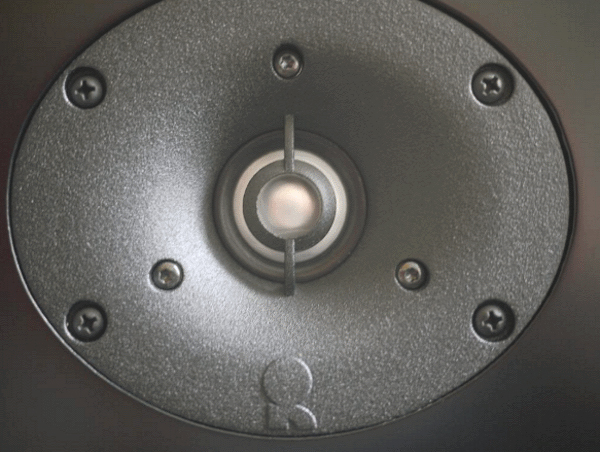
This is the 3rd generation waveguide today on the M106:
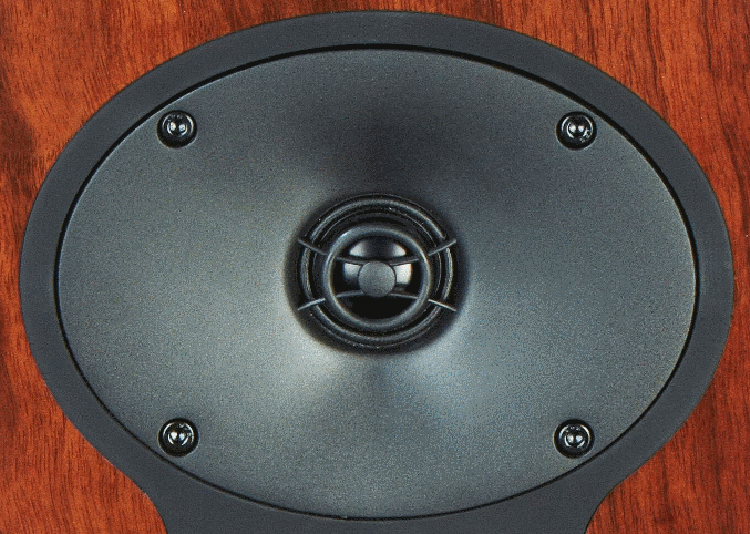
Another pending patent applies to the new 3rd generation waveguide:
Charles Sprinkle, “Loudspeaker Horn” United States Patent App US2015001408
The inventor wrote me to provide more details on the extension of the technology:
“What previous waveguide geometries did not have is independence of pattern vs. mouth geometry. In other words, with a simple elliptical waveguide, you can choose the horizontal pattern and mouth dimensions, but the vertical pattern is set by the other variables. The system engineer cannot independently alter the vertical pattern to optimize vertical directivity transition without changing the vertical size of the waveguide and the lower pattern control frequency”.
My measurement of the horizontal radiation pattern of the M106 is shown above. The 7 curves shown are individual microphone measurements, not the averages.
On axis, with no averaging, the peak in the tweeters response 4.5kHz -6.5kHz is brought more clearly into focus. Kevin Voecks reports this is not a resonance “but is due to a transition in the waveguide from limiting dispersion to increasing it, and from diffraction”. The peak reduces significantly at 15 degrees off-axis and becomes smaller at wider angles.
All the curves exhibit an amplitude roll-off above 6kHz although the on-axis measurement recovers past 10kHz and is perhaps a little above the reference level. This is where the tweeter level control would have been useful.
In the curve you can see the 6.5 inch woofer becoming increasingly directional with increasing frequency which is to be expected. The tweeter begins to become active, under the control of the crossover network, at 2kHz, and makes its presence known in the horizontal radiation curves. The full transition to the tweeter occurs around 3kHz. You can see some non-monotonic behavior of the curves in the 2kHz – 3kHz region. Above 3kHz, the waveguide on the tweeter reduces the amplitude of the response in the off-axis curves.
Ideally we do not want the non-monotonic behavior in the 2kHz – 3kHz region. For a two way transitioning between a 6.5 inch woofer and a 1 inch tweeter, the waveguide can go only so far.
Above is the normalized horizontal radiation response. The on-axis response is removed from the off-axis measurements. It is easier to see the directional characteristics of the drivers and the effect of the waveguide. Below 2kHz, the dispersion of the woofer dominates the curves set. As the tweeter becomes active, the normalized off-axis curves moves up coming closer to the normalized on axis response reaching a maxima at 3kHz, which is slightly above the crossover frequency. From 3kHz to 4.5kHz, each normalized curve returns to the amplitude level shown in this curve at 2kHz.
I repeated the normalized horizontal radiation measurement with a discontinued Infinity 3-way product that used an older waveguide design (not shown). For this speaker the transition from the maximum off-axis response of the midrange to the crossover point was more abrupt, occurring within about a 300Hz transition zone. The maximum level held for about 700Hz and then declined back.
Above is the vertical radiation pattern as the microphone moves below the tweeter axis. Since the microphone is getting closer to the floor, room reflections get into this measurement sooner, which is why I blocked out anything below 900Hz. For a two-way speaker, changes will occur at the single crossover point so we are not losing information. Note: I reference these angles to 3ft. The change in angle at your listening seat (9ft or more) is much smaller for a given change in distance in the vertical plane. As you can see, things are almost unchanged until -15 degrees. Your dog might complain listening a meter away on the floor.
The radiation pattern above the tweeter axis is very good as shown in the graph above. To 10 degrees off-axis, the response does not change significantly. This speaker will pass the sit down – stand up tonality test on music although a change can be heard with pink noise.
The notches that occur at higher angles are a result of the physical separation of the two drivers. The separation introduces a delay which causes destructive interference when both drivers are active. No constructive interference is seen in the vertical radiation pattern. This is consistent with a speaker with acoustic slopes matching a Linkwitz–Riley crossover.
Note that both these vertical radiation plots also show changes above 4kHz that match the horizontal radiation plots +/-15 degrees. Above this frequency, the tweeter is fully active and the measurement contains only the off-axis radiation pattern of the tweeter.
The lack of the separate terminals for the woofer and tweeter prevented measurements of the crossover without going inside the box and bypassing the crossover. I thus cannot confirm the order of the filter or, that, at the crossover point the drivers are in phase at -6dB down, but the fact the curves show no constructive interference implies that this is a Linkwitz–Riley crossover.
I averaged the 7 curves from -15 degrees vertical to + 15 degrees vertical. Note that almost no dip occurs in the region. This is excellent performance for this two-way system. Compare this measurement to competitive speakers which can have depressions the size of sink holes. That happens with low order crossovers or higher order crossovers which have not been properly designed to take into account the acoustic roll-off of the drivers.
With today’s modern Computer Aided Design Tools, even the smallest design shop can do an adequate design of a crossover but these dips are still present on competitive designs. Why would anybody do this? A common reason is to voice the speaker so it may sound more pleasing to some listeners, at least in the show room. A discussion of all the tricks you can play by modifying the crossover is not something I will go into here. The M106 does not play these games.
Preview: A new standard set of anechoic curves, that are specified to be printed in a specification sheet for speakers, can predict the performance of a speaker in a listening room. I demonstrate this with measurements of the Revel M106 made in a large listening room. Large rooms lack room modes that can extend the low frequency limit of a mini-monitor. I look at deployment of a subwoofer with the Revel M106 in the large room and discuss problems with mini-monitors that have 5.25 inch woofers.
This is a three-part article. Here are links to Part One, Part Two, and Part Three


